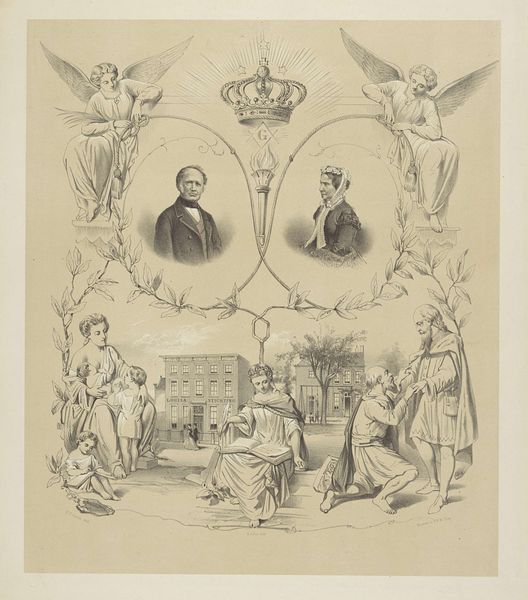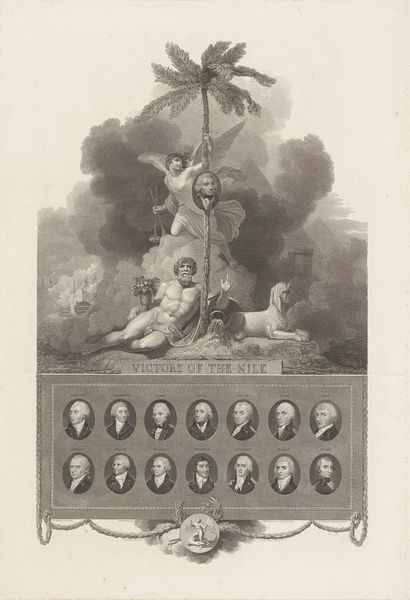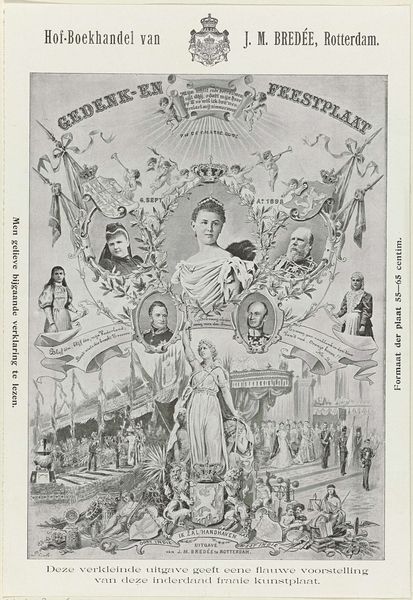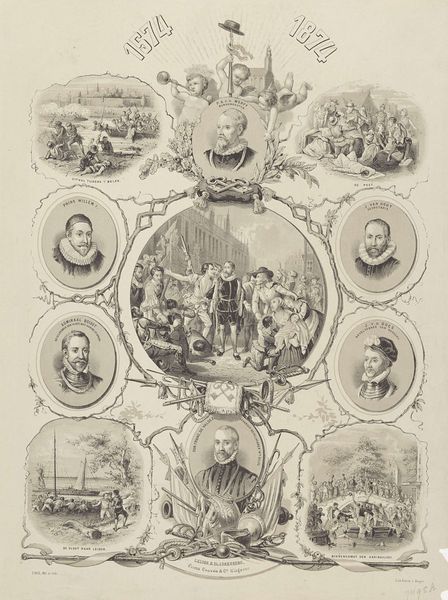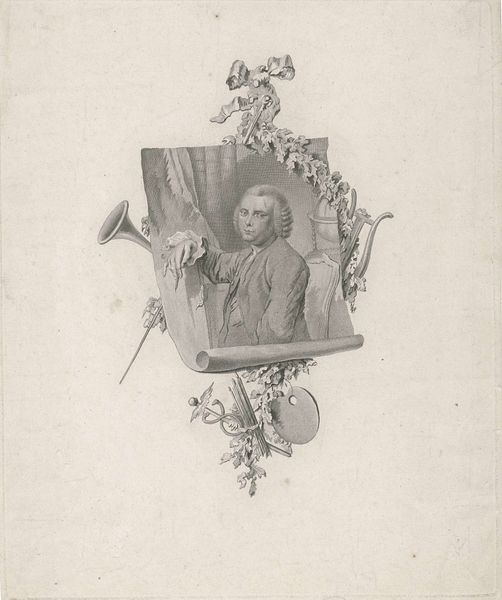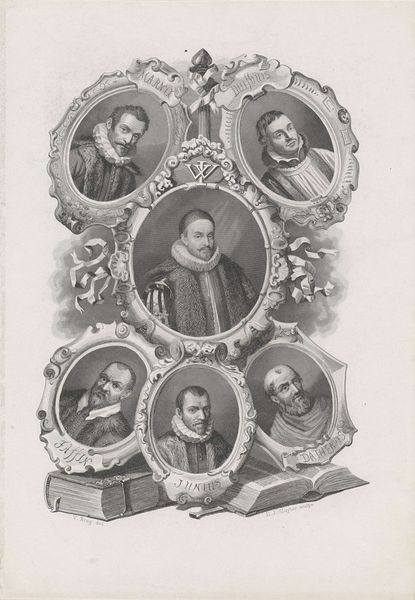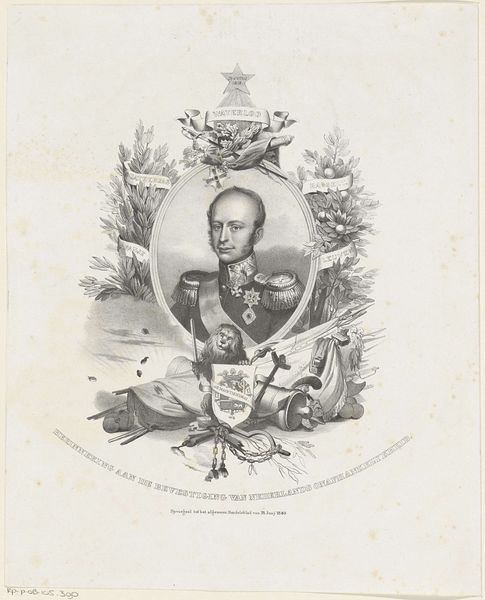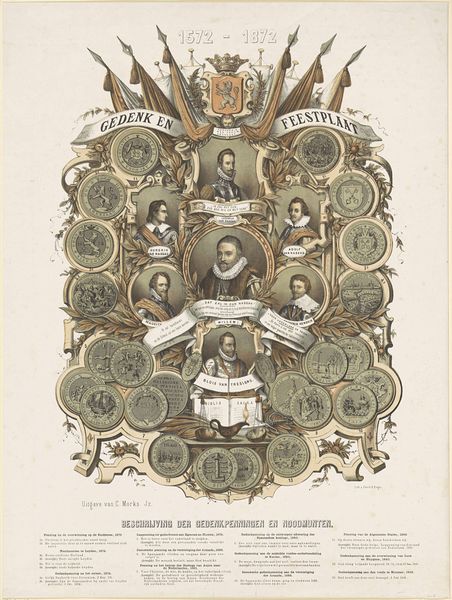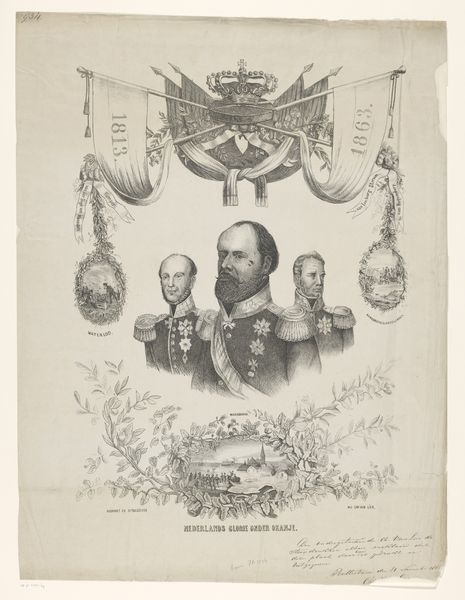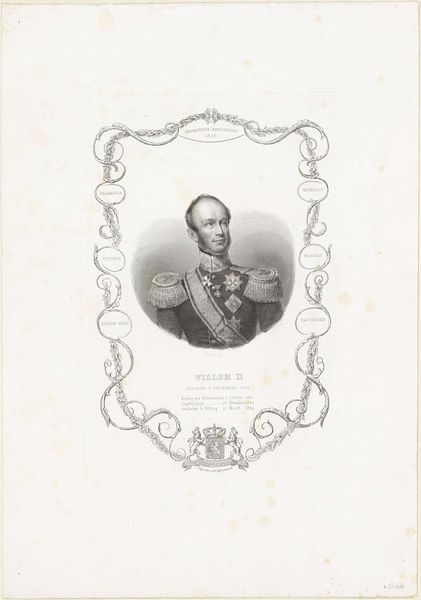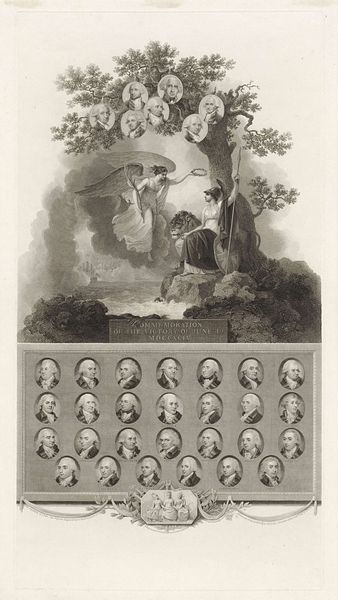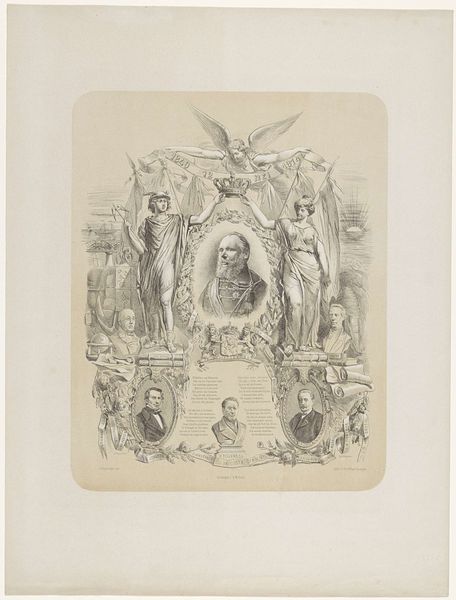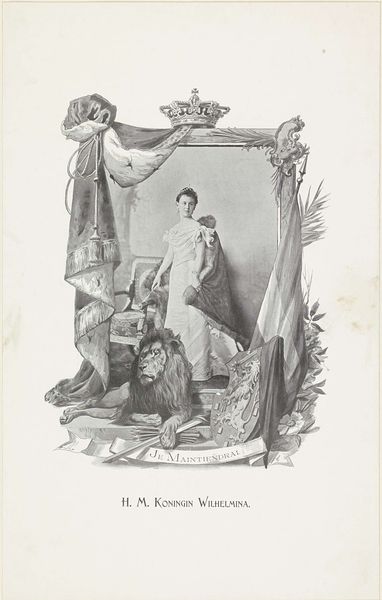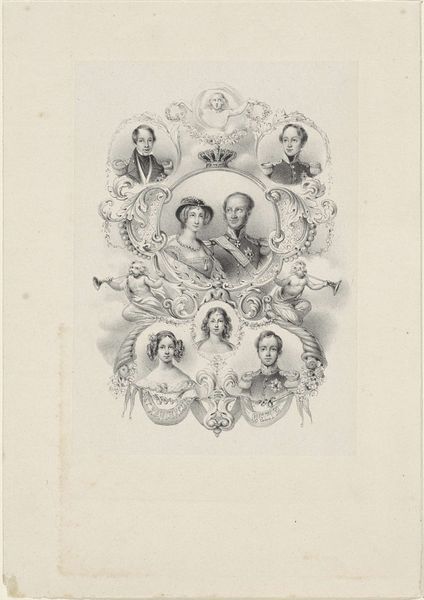
print, engraving
#
portrait
#
16_19th-century
#
dutch-golden-age
# print
#
history-painting
#
engraving
Dimensions: height 428 mm, width 326 mm
Copyright: Rijks Museum: Open Domain
Curator: This engraving, titled "Feestplaat. 1 April 1572. 1 April 1872," was created by Gerardus Johannes Bos in 1872. It commemorates the 300th anniversary of a significant event in Dutch history. Editor: It’s incredibly detailed. My immediate impression is of organized chaos – so many elements competing for attention, yet held together by an underlying geometric structure. A fascinating dance between freedom and control. Curator: Precisely. This piece commemorates the Capture of Brielle by the Watergeuzen, marking a turning point in the Dutch Revolt against Spanish rule. It's not just a celebration, it’s a construction of national identity. The central portrait of William of Orange acts as the keystone, doesn’t it? Editor: Absolutely. Visually, the weaponry – the cannons, muskets, spears – encircling William's image speaks to the struggle for freedom. Note how the artist contrasts light and shadow to create depth, drawing our eye to the essential symbolism of those objects. They create tension, formalize the composition. Curator: Consider, too, the placement of figures and scenes in relation to that weaponry. Representations of ordinary people seizing control, participating in historical making. These images act almost as framing devices for the more explicitly bellicose symbols of Dutch nationalism. Who gets represented and how – and, critically, who is absent? These choices matter. Editor: The circular vignettes create a wonderful sense of movement and narrative progression, framing the celebration within specific moments and individuals, unified under this conceptual understanding of liberation. The use of circular forms directs your vision and is a clever construction. Curator: I find it thought-provoking that this "Feestplaat" was created three centuries after the event it celebrates. It speaks to the ongoing need to actively cultivate collective memory and to define nationhood in the face of shifting power dynamics. Who is invited to this feast? What does it cost to participate? Editor: I concur. The rigorous, balanced composition—a result of light, shadow, line, and form—works cohesively to bind many distinct elements together to a singular effect of national identity in flux. A complex statement with remarkable clarity.
Comments
No comments
Be the first to comment and join the conversation on the ultimate creative platform.
